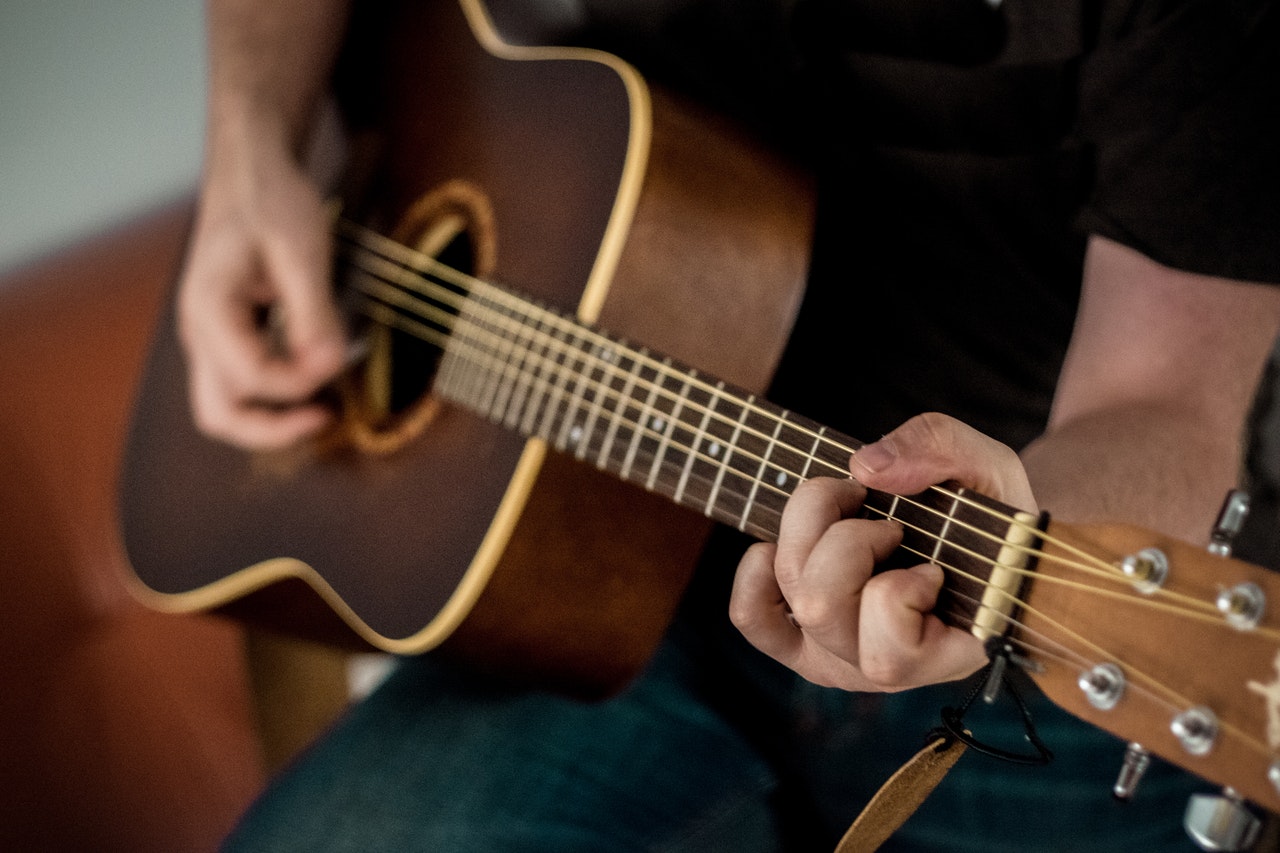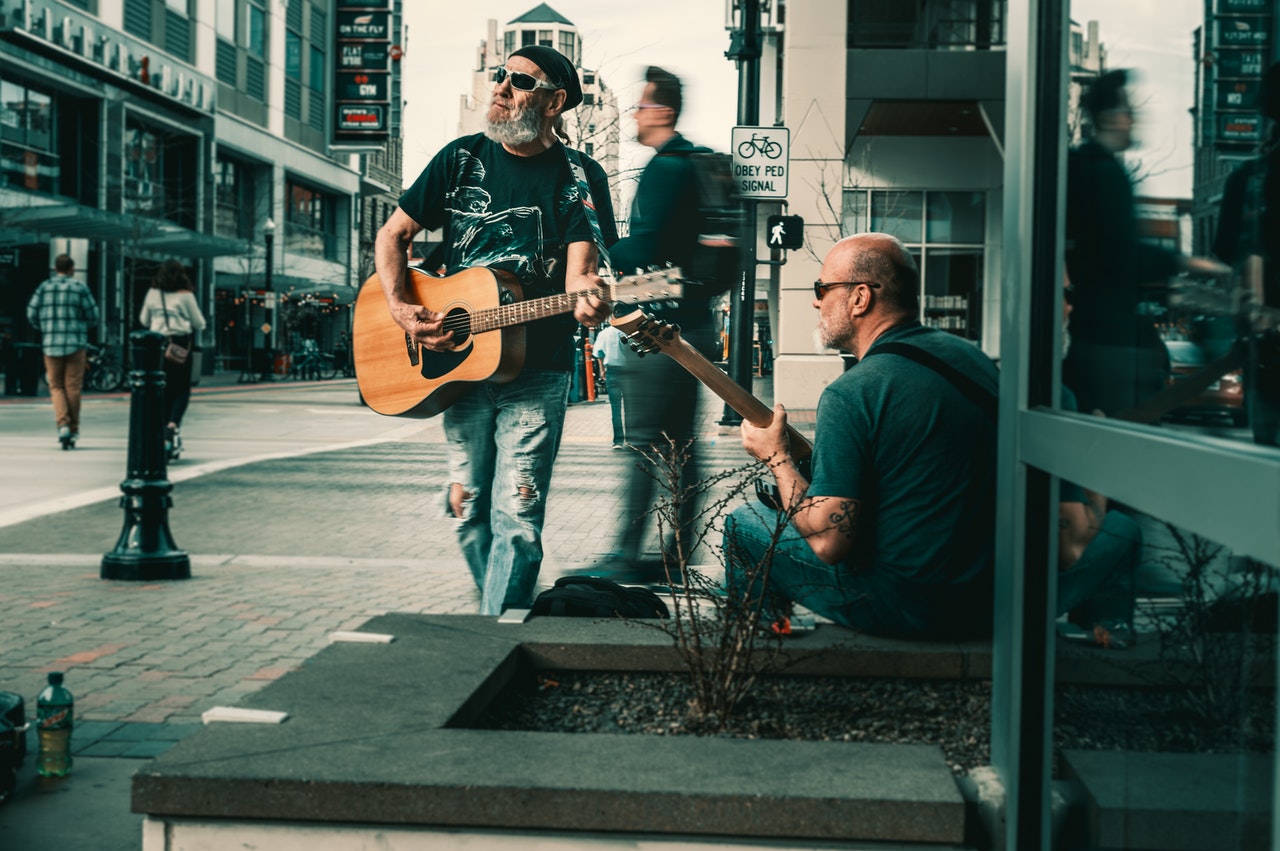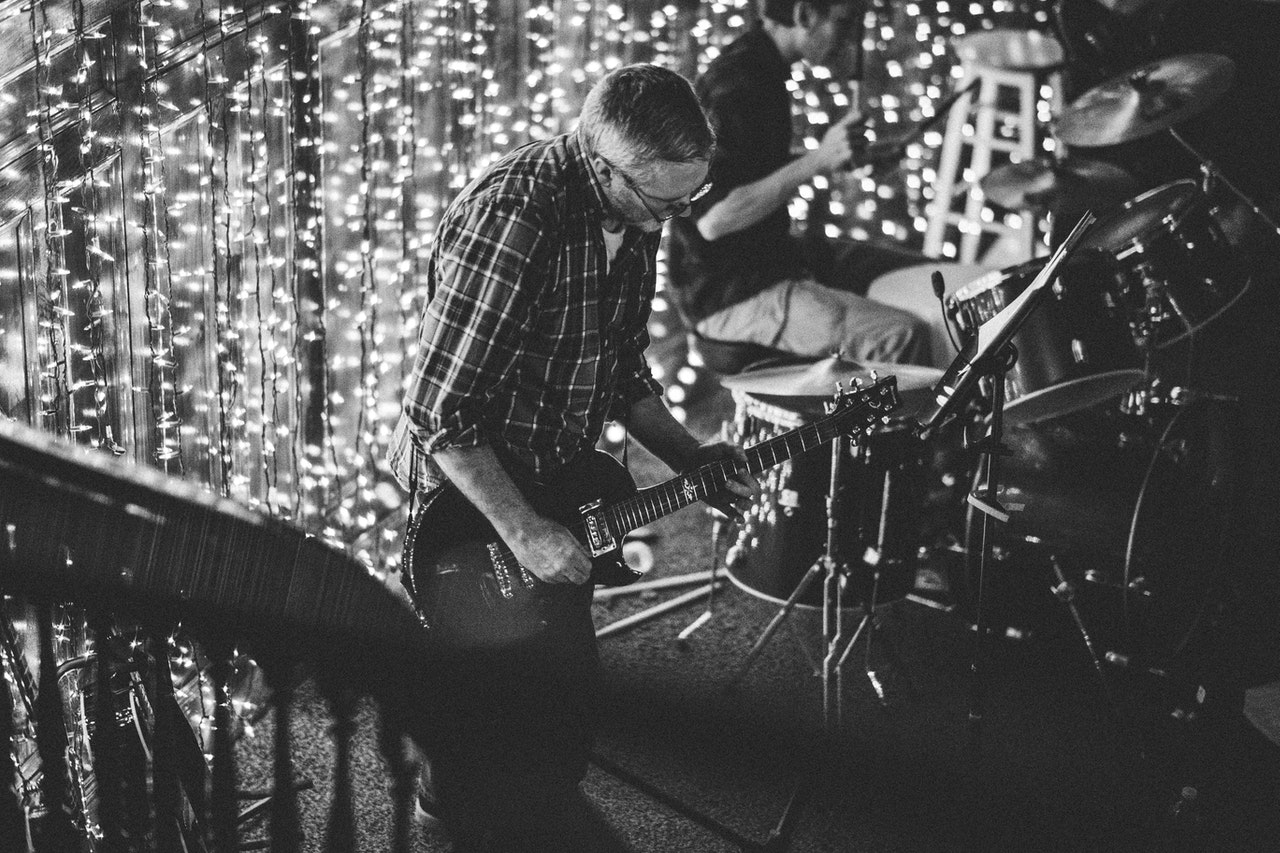Gene Clark
Share

By: Stephen Rose
 Gene Clark was a folk-singer who gained fame in 1964 as founding member and chief songwriter for folk-rock pioneers the Byrds. He made two albums with the Byrds and was responsible for some of their best songs and biggest hits, but was never able to jump start his solo career after leaving the group. Despite releasing several outstanding albums for major labels he spent most of his career toiling in relative obscurity.
Gene Clark was a folk-singer who gained fame in 1964 as founding member and chief songwriter for folk-rock pioneers the Byrds. He made two albums with the Byrds and was responsible for some of their best songs and biggest hits, but was never able to jump start his solo career after leaving the group. Despite releasing several outstanding albums for major labels he spent most of his career toiling in relative obscurity.
Gene Clark was born November 17, 1944 in Tipton, Missouri. The third of thirteen children, he grew up in Kansas City and learned guitar from his father when he was nine years old. When he was thirteen he joined a local rock and roll combo, then switched to folk after hearing the Kingston Trio. In August 1963 he joined The New Christy Minstrels (along with Barry McGuire and Kenny Rogers), but quit the group in early 1964 after discovering The Beatles playing on a jukebox in Toronto. He moved to Los Angeles in the hopes of joining a rock band patterned after the energetic new style of music coming from across the pond.
Upon arriving in Los Angeles, Gene Clark struck up a professional relationship with Jim McGuinn and David Crosby, whom he met one evening at the Troubadour. Both had also worked professionally as folk artists – Jim McGuinn (later Roger McGuinn) had been a songwriter at the Brill Building in New York, and performed with The Limeliters; while David Crosby performed with Les Baxter’s Balladeers. Together they combined their folk upbringing with the rock sensibilities of the Beatles and lyricism of Bob Dylan to champion a new style of music that came to be known as Folk Rock. Rounding out the group were Chris Hillman (a former bluegrass mandolin player) on bass, and Michael Clarke on drums.
[Not only did The Beatles influence The Byrds, but The Byrds had a big impact on The Beatles. The two bands became acquainted when The Byrds toured Britain in July 1965, leading The Beatles to broaden their sound with influences drawn from The Byrds and Bob Dylan. The album cover on The Beatles “Rubber Soul” (released December 1965) is photographed with a fisheye lens similar to that used on the The Byrds “Mr. Tambourine Man,” released six months earlier. George Harrison wrote “If I Needed Someone” after hearing The Byrds’ “Bells of Rhymney,” and John Lennon liked Jim McGuinn’s little rectangular sun glasses so much that he began wearing a round version. ]

Primitive demo recordings made in 1964 of the Byrds (then known as the Jet Set) developing their new style were released in 1969 on the album “Preflyte.” Gene Clark’s songwriting skills and mastery of the new idiom were already on display on tracks such as “Here Without You,” “She Has A Way,” “You Won’t Have To Cry,” “For Me Again,” “I Knew I’d Want You,” and “Boston.” David Crosby also contributed a fine early vocal lead on “The Airport Song.” Another demo on the album that Clark co-wrote with Jim McGuinn, “You Showed Me,” was never released by the Byrds, but became a big hit for The Turtles in 1969.
[Other notable folk-rock groups who follwed in The Byrd’s footsteps include Simon & Garfunkle, and The Mamas & The Papas. Also, Jefferson Airplane’s first album, “Takes Off,” released in September 1966, is another prime example of the genre.]
Gene Clark recorded two albums with the Byrds: Mr. Tambourine Man (June 1965), and Turn! Turn! Turn! (December 1965), and was at work on a third, Fifth Dimension (July 1966) when his tenure with the band ended. In February 1966 – just prior to the release of his last single with the group, “Eight Miles High” (one of the first psychedelic rock hits on the radio) he had a panic attack as the band boarded a flight to New York. Gene Clark had witnessed a fatal airplane crash as a youth, which led to a lifelong fear of flying. He disembarked and refused to take the flight – prompting Roger McGuinn to tell him if he can’t fly then he can’t be a Byrd. (The joke at the time was he was the Byrd who couldn’t fly.) Internal tensions within the band resulting from the extra royalties he collected as the band’s primary songwriter also contributed to his leaving the band. His compositions while with The Byrds included “I’ll Feel A Whole Lot Better,” “You Won’t Have To Cry,” “Here Without You,” “She Has A Way,” “The World Turns All Around Her,” “She Don’t Care About Time,” and “Set You Free This Time.”
Bassist Chris Hillman noted years later, “People don’t give enough credit to Gene Clark. He came up with the most incredible lyrics. I don’t think I appreciated Gene Clark as a songwriter until the last two years. He was awesome! He was heads above us! Roger wrote some great songs then, but Gene was coming up with lyrics that were way beyond what he was. He wasn’t a well-read man in that sense, but he would come up with these beautiful phrases. A very poetic man – very, very productive. He would write two or three great songs a week. He was the songwriter. He had the gift that none of the rest of us had developed yet…. What deep inner part of his soul conjured up songs like “Set You Free This Time,” “I’ll Feel A Whole Lot Better,” “I’m Feelin’ Higher,” “Eight Miles High”? So many great songs! We learned a lot of songwriting from him and in the process learned a little bit about ourselves. At one time, he was the power in the Byrds, not McGuinn, not Crosby—it was Gene who would burst through the stage curtain banging on a tambourine, coming on like a young Prince Valiant. A hero, our savior. Few in the audience could take their eyes off this presence.”
After leaving the Byrds, Gene Clark took time off to relax at his home in Laurel Canyon – a critical decision during an era when bands were pressured to release two albums a year to stay in the public eye. In May 1966 he formed a group called “Gene Clark & and The Group,” debuting with a series of summer concerts at the Whiskey A-Go-Go on the Sunset Strip. This was followed by an aborted recording session before he disbanded The Group.
 In December 1966, ten months after leaving the Byrds, Gene Clark re-signed with Columbia Records and went back to work on his first solo album. He was assisted in the studio by Leon Russell and Glen Campbell (of the legendary Wrecking Crew), who had contributed session work on the Byrds’ earlier albums. Chris Hillman and Michael Clarke, of the Byrds, rejoined Gene Clark on bass and drums, while Van Dykes Parks performed on keyboards.
In December 1966, ten months after leaving the Byrds, Gene Clark re-signed with Columbia Records and went back to work on his first solo album. He was assisted in the studio by Leon Russell and Glen Campbell (of the legendary Wrecking Crew), who had contributed session work on the Byrds’ earlier albums. Chris Hillman and Michael Clarke, of the Byrds, rejoined Gene Clark on bass and drums, while Van Dykes Parks performed on keyboards.
The resulting album, released by Columbia Records in January 1967, was titled “Gene Clark with the Gosdin Brothers.” Despite the misleading title, the album was strictly a Gene Clark solo project with all of the tracks being his original compositions. Vern and Rex Gosdin – bluegrass musicians who had played with Chris Hillman in the Hillmen – contributed effective vocal harmonies on songs such as “Think I’m Gonna Feel Better, “I Found You,” “The Same One,” “Couldn’t Believe Her,” and “Needing Someone;” while future Byrd Clarence White planted the seeds of Country Rock with his electric guitar picking on “Tried So Hard,” “Keep On Pushin”, and ”Needing Someone.” White also wove intricate guitar interplay with Glen Campbell on “The Same One.” Another track, “Elevator Operator” has George Harrison’s “Taxman” written all over it, down to the bouncing bass lines and fadeout harmonies.
Listening to many of these tracks is like discovering a cachet of lost 60’s gems. Certainly two of the album’s highlights “Is Yours Is Mine” and “I Found You” could have been top 10 hits if given better promotion by Columbia or released while Gene Clark was still a member of the Byrds.
Unfortunately, the album was derailed by Columbia’s decision to release it the same week they released the Byrds fourth album “Younger Than Yesterday,” thus stealing much of its thunder. Also, Leon Russell sabotaged two of the tracks, “Echoes” and “So You Say You Lost Your Baby,” by adding psychedelic baroque string arrangements – somewhat fashionable at the time, but which have dated badly through the years – thus ruining any chance these two otherwise fine Gene Clark compositions had of gaining radio airplay.
[Most of these tracks are also available on the Sony anthology “Echoes,” which supplements the Gosdin Brothers album with demos from the Preflyte album, a few tracks that Clark recorded with the Byrds, and some unreleased songs.]
David Crosby was fired from the Byrds shortly after the Monterey Pop Festival in July 1967, and Gene Clark briefly rejoined the group as his replacement – including an appearance on the Smothers Brothers Comedy Hour – but left after only three weeks. He co-wrote the song “Get To You” with Roger McGuinn from the Byrds’ fifth album “The Notorious Byrd Brothers,” and contributed background vocals on the tracks “Goin’ Back” and “Space Odyssey”.
In 1968, Clark signed with A&M Records and began a collaboration with Laramy Smith in a group called Phoenix. They recorded a number of songs, including “Los Angeles”, but prior to completing an album the group disbanded when Clark and Smith could not agree on a common style. [“Los Angeles” is included in the “Flying High” Gene Clark anthology.]

In October 1968, Gene Clark and bluegrass banjo player Doug Dillard (of The Dillards) formed the duo Dillard & Clark and released “The Fantastic Expedition of Dillard & Clark” on A&M records. The Dillards were among the first country musicians to perform on electric instruments, and their 1968 album “Wheatstraw Suite” is considered a country-rock classic. Also contributing to the project were Chris Hillman and Michael Clarke of the Byrds on mandolin and drums, and future Eagle Bernie Leadon on guitar. The album was released August 30, 1968 and was an early foray into country-rock – following by a few months the Byrds’ groundbreaking country-rock classic “Sweetheart of the Rodeo,” featuring Gram Parsons.
Gene Clark’s characteristic minor key, melancholy melodies and introspective lyrics permeated this work. He wrote nearly every song on the album including the opening track “Out On The Side,” “With Care From Someone,” “In The Plan,” and “Something’s Wrong.” Bernie Leadon co-wrote “She Darked The Sun,” and “Train Leaves Here This Morning.” [In 1972, the Eagles covered “Train Leaves Here This Morning” on their self-titled debut.]
In August 1969, Dillard & Clark released “Through The Morning, Through The Night.” Chris Hillman, Michael Clarke and Bernie Leadon returned, and were joined by Sneaky Pete Kleinow (Flying Burrito Brothers) on pedal steel and Doug Dillard’s girlfriend Donna Washburn on vocals. The album was more bluegrass in nature than its predecessor and contains more covers. In addition to the title track, Gene Clark contributed “Corner Street Bar,” “Kansas City Southern,” and “Polly.” The album also includes a cover of the Everly Brothers “So Sad,” and closes with a bluegrass version of John Lennon’s “Don’t Let Me Down.”
[In 1972, the Dillard & Clark song “Through The Morning Through The Night” was used in Quincy Jones’s soundtrack of the Sam Peckinpah movie The Getaway. In 1975, Pure Prairie League covered “Kansas City Southern” on their “Two Lane Highway” album. In 2007, Robert Plant and Alison Krauss covered “Through The Morning Through The Night,” and “Polly” on their Grammy-winning release “Raising Sand.”]
In 1970, Gene Clark recorded two songs with the original members of the Byrds for release as a single. The band was in fine form – especially Chris Hillman on bass – however, due to legal problems the two tracks, “She’s the Kind of Girl” and “One in a Hundred” were not released at the time. [In 1973, these songs were included in the Roadmaster compilation.]
In 1970 and 1971, Gene Clark contributed vocals and two compositions, “Tried So Hard” and “Here Tonight” to albums by the Flying Burrito Brothers. [“Here Tonight” was also included in the Roadmaster compilation.]
A study in contrasts: While Gram Parsons stayed true to – and cultivated – his vision, pioneering country rock with the Byrds and introducing the world to alt-country in February 1969 with the first Flying Burrito Brothers album. Gene Clark, on the other hand, after making significant contributions to the birth of folk rock, psychedelic rock, baroque rock, newgrass and country rock, seemed slightly adrift in developing and maintaining a consistent style throughout his career. After Dillard & Clark disbanded in late 1969, he and his new wife Carlie relocated to a secluded spot in Mendocino on the Northern California coast to escape the hectic L.A. lifestyle and began work on a new batch of songs.
.
White Light was released to critical acclaim, including Rolling Stone which declared it “a fresh and innovative look at what came before in a new framework. One of the most interesting and exciting records of 1971.” In the Netherlands, it was voted album of the year by rock music critics. However, Gene Clark’s refusal to promote White Light by touring adversely affected its sales.
In 1971, Gene Clark was commissioned by Dennis Hopper to contribute two tracks, “American Dreamer” and “Outlaw Song,” to the film American Dreamer. [A re-recorded, longer version of the song “American Dreamer,” plus a re-recorded version of “Outlaw Song,” was later used in the 1977 film “The Farmer.”]
 In 1972, Gene Clark began work on the follow-up to White Light for A&M records. Intended as a country rock album, Clarence White was brought back on guitar, Sneaky Pete Kleinow played pedal steel, ex-Byrd Michael Clarke sat in on drums, and Spooner Oldham played piano. Eight tracks were recorded including “She Don’t Care About Time,” a reworking of the Byrds classic, before the project was terminated by the record company. In 1973, these tracks were included in the Roadmaster compilation for release in Europe, and later issued in the states. However, this album is not a good starting point for the novice Gene Clark fan. Apparently the recording session was a non-stop party for all involved, but the finished results sound more like a bad hangover. The production is missing spark and several tracks are down tempo to the point of being dirge-like – including the Byrds cover. The best song “Full Circle” was recorded again for the Byrds reunion album, released in 1973. Highlights include “Shooting Star,” “I Remember The Railroad,” and “Roadmaster,” written by Spooner Oldham.
In 1972, Gene Clark began work on the follow-up to White Light for A&M records. Intended as a country rock album, Clarence White was brought back on guitar, Sneaky Pete Kleinow played pedal steel, ex-Byrd Michael Clarke sat in on drums, and Spooner Oldham played piano. Eight tracks were recorded including “She Don’t Care About Time,” a reworking of the Byrds classic, before the project was terminated by the record company. In 1973, these tracks were included in the Roadmaster compilation for release in Europe, and later issued in the states. However, this album is not a good starting point for the novice Gene Clark fan. Apparently the recording session was a non-stop party for all involved, but the finished results sound more like a bad hangover. The production is missing spark and several tracks are down tempo to the point of being dirge-like – including the Byrds cover. The best song “Full Circle” was recorded again for the Byrds reunion album, released in 1973. Highlights include “Shooting Star,” “I Remember The Railroad,” and “Roadmaster,” written by Spooner Oldham.
 Based on his work on the Byrds reunion album, Gene Clark was offered a contract with David Geffen’s Asylum Records label, and returned to the studio in early 1974 to begin work on “No Other.” A trendsetter earlier in his career, Clark was now trying to keep up with changing tastes and fashions in the singer/songwriter era of the early 70’s, and searching for an audience for his post-Byrds solo excursions. No Other would prove to be his last chance at grabbing the brass ring, and he was in fine form on this album. His producer, Thomas Jefferson Kaye, delivered a well-crated, finely-orchestrated recording that proceeded along at an unhurried, leisurely pace. The most effective tracks on No Other were those with the simplest arrangements, taking advantage of Gene Clark’s vocal and songwriting skills. Songs such as “Life’s Greatest Fool,” “Silver Raven,” “From a Silver Phial,” “The True One,” and “Lady of the North” harkens back to the best of Gene Clark’s earlier country-inspired classics. However, other tracks such as “No Other,” and “Strength of Strings” are tainted by over-production and artistic excesses. A producer must walk a fine line between helping an artist achieve his vision, while not imposing a vision of his own on the artist. For example, on the title track, Kaye employs studio wizardry to double-track Clark’s vocal, then channels the results through a telephone in order to create a cavernous effect. Also, “Some Misunderstanding” is almost too leisurely, clocking in at over 8 minutes. [The CD reissue includes a reworking of “Train Leaves Here This Morning” first issued in 1968 by Dillard & Clark.]
Based on his work on the Byrds reunion album, Gene Clark was offered a contract with David Geffen’s Asylum Records label, and returned to the studio in early 1974 to begin work on “No Other.” A trendsetter earlier in his career, Clark was now trying to keep up with changing tastes and fashions in the singer/songwriter era of the early 70’s, and searching for an audience for his post-Byrds solo excursions. No Other would prove to be his last chance at grabbing the brass ring, and he was in fine form on this album. His producer, Thomas Jefferson Kaye, delivered a well-crated, finely-orchestrated recording that proceeded along at an unhurried, leisurely pace. The most effective tracks on No Other were those with the simplest arrangements, taking advantage of Gene Clark’s vocal and songwriting skills. Songs such as “Life’s Greatest Fool,” “Silver Raven,” “From a Silver Phial,” “The True One,” and “Lady of the North” harkens back to the best of Gene Clark’s earlier country-inspired classics. However, other tracks such as “No Other,” and “Strength of Strings” are tainted by over-production and artistic excesses. A producer must walk a fine line between helping an artist achieve his vision, while not imposing a vision of his own on the artist. For example, on the title track, Kaye employs studio wizardry to double-track Clark’s vocal, then channels the results through a telephone in order to create a cavernous effect. Also, “Some Misunderstanding” is almost too leisurely, clocking in at over 8 minutes. [The CD reissue includes a reworking of “Train Leaves Here This Morning” first issued in 1968 by Dillard & Clark.]
David Geffen was outraged at the $100,000 studio cost of producing just eight tracks. Additionally, Gene Clark’s refusal to tour deprived the album of generating any buzz or gaining sales momentum, thus causing it to stall at #86 on Billboard’s pop album charts. More damaging was Gene Clark’s reversion to a hedonistic lifestyle during the recording session in Los Angeles which led to the disintegration of his marriage.
His career in shambles, Gene Clark spent the next two years touring the country in his Dodge van, performing in small clubs in an attempt to promote his albums and recapture a fan base. His backup group at the time, The Silverados, featured Roger White on Telecaster guitar, and Duke Bardwell, who had previously performed with Elvis Presley and Loggins & Messina, on electric bass and banjo

A 1975 performance of Gene Clark and the Silverados from Ebbets Field in Denver was broadcast for radio, then issued on CD in 2006 by Collector’s Choice Music. “Silverado ’75 Live & Unreleased” contains two Byrds covers “Here Without You” and “Set You Free This Time;” three songs from Dillard & Clark: “Kansas City Southern,” “She Darked The Sun,” and “Train Leaves Here This Morning;” and two songs from No Other: “Silver Raven” and “No Other.” Other highlights include “Home Run King” from Two Sides to Every Story, and an unreleased Clark original, “Daylight Line.”
In 1977, producer Thomas Jefferson Kaye dismissed the Silverados and brought in studio musicians to back Gene Clark on his next album “Two Sides to Every Story,” released on RSO Records. Stylistically the album was a return to Country Rock, with Doug Dillard rejoining Clark for this project. Once again the album failed to find chart success although Gene Clark overcame his fear of flying to promote the album with an international tour.
While performing in Britain, Clark reunited with ex-Byrds Roger McGuinn and Chris Hillman. They regrouped as a trio and signed with Capitol Records to release a self-titled debut in 1979. It included the Roger McGuinn composition, “Don’t You Write Her Off,” which reached #33 on the charts. On their second release, Gene Clark contributed “Won’t Let You Down,” before leaving the group over artistic differences prior to the album’s release.
Gene Clark moved to Hawaii with Jesse Ed Davis to try to overcome his drug dependency, remaining there until the end of 1981. Upon his return to L.A., he assembled a new band and began work on what would eventually become the Firebyrd album (the title reflects how the group was comprised of members from Firefall and the Byrds.)

Firebyrd, released in 1984, would be the last solo outing for Gene Clark. The album is not one of his best efforts, although there are several good Clark compositions, including “Rain Song,” “Something About You Baby,” and “Blue Raven.” Overall, the production is too slick and synthetic sounding, which does not serve well Gene’s organic, folk roots. Thomas Jefferson Kaye co-produced the album.
Firebyrd’s release coincided with the emergence of jangle rockers like R.E.M. and Tom Petty who sparked a new interest in the Byrds. Clark also began developing new fans among L.A.’s Paisley Underground scene (in particular, The Bangles, and the Three O’Clock). Later in the decade, he embraced his new status by appearing as a guest vocalist with The Long Ryders on the song “Ivory Tower” from their Native Sons release.
In 1985, Clark approached McGuinn, Crosby, and Hillman about reforming the Byrds in time for the 20th anniversary of the release of “Mr. Tambourine Man”. The three of them showed no interest, so Clark decided to assemble a “superstar” collection of musicians, including ex-Flying Burrito Brothers member Rick Roberts, ex-Beach Boys singer/guitarist Blondie Chaplin, and Richard Manuel of The Band, with ex-Byrds Michael Clarke and John York. Clark initially called his band “The 20th Anniversary Tribute to The Byrds” and began performing on the lucrative nostalgia circuit. As the band continued to tour, their agent decided to shorten their name to “The Byrds”, much to the chagrin of McGuinn, Crosby and Hillman. [David Crosby finally secured rights to the Byrds name in 2002.]
During this time, Gene Clark collaborated with Pat Robinson and John York in a side-project called CRY. They recorded several demos which were later released on the album “Under The Silvery Moon.” Nicky Hopkins played piano with the group, and Rick Danko of The Band was on bass. Although the production values of the album are primitive, the album contains several spirited performances of new and old new Gene Clark material including “Mary Sue,” “Nothing But An Angel,” “More Than That Now,” “Immigrant Girl,” and “Fair and Tender Ladies.” John York closes the album with the rollicking, “You Just Love Cocaine.”
In 1987, Gene Clark and Carla Olson (of the Textones) released “So Rebellious a Lover.” A true collaboration, Olson handles the vocal lead on several tracks including the opener “The Drifter,” as well as “Every Angel in Heaven,” “Deportee,” and “Are We Still Making Love.” The album is well produced by session drummer Michael Huey, with stripped down arrangements and a country-ish, adult contemporary feel about it. At this point in his career Gene Clark needed vocal accompaniment to help carry the singing load. Years of alcohol abuse and a heavy tobacco habit had taken a toll on his voice, leaving it thin and frail sounding. He captures some of his old magic on tracks such as “Gypsy Rider,” “Fair and Tender Ladies,” and “Why Did You Leave Me Today.” Other highlights include an effective cover of Gram Parson’s “I’m Your Toy,” and John Fogarty’s “Almost Saturday Night.”

The album was a modest commercial success, but Clark soon began to develop serious health problems; he developed ulcers, aggravated by years of heavy drinking (often used to alleviate his chronic travel anxiety). In 1988, he underwent surgery, during which much of his stomach and intestines had to be removed. A period of abstinence and recovery followed until Tom Petty’s cover of “I’ll Feel a Whole Lot Better” on his 1989 album Full Moon Fever yielded a huge amount of royalty money to Clark who then quickly reverted back to drug and alcohol abuse.
On February 3, 1990, Gene Clark and Carla Olson performed before a small audience at McCabe’s, in Santa Monica, CA. The resulting album, “Silhouetted In Light,” is a modest document of the duo performing songs such as “Fair and Tender Ladies” from their studio album; “Train Leaves Here This Morning,” from Dillard & Clark; “I’ll Feel A Whole Lot Better” and “Set You Free This Time” from the Byrds. Gene Clark also performs his original “Your Fire Burning;” and Carla Olson contributes, “Number One Is To Survive,” and “Photograph.” The album also includes covers of Tom Paxton’s “Last Thing On My Mind,” and John Prine’s “Speed of the Sound of Loneliness.”
In January 1991, The Byrds set aside their differences long enough to appear together at their induction into the Rock & Roll Hall of Fame. They performed several songs together, including Clark’s “I’ll Feel a Whole Lot Better.” However, Clark’s health continued to decline as his drinking accelerated. He died of a heart attack on May 24, 1991 at age 46, brought on by a bleeding stomach ulcer. He was buried in his hometown of Tipton, Missouri under a simple headstone inscribed “Harold Eugene Clark – No Other.”
Video
The Byrds – I’ll Feel A Whole Lot Better (May 11, 1965)
httpv://www.youtube.com/watch?v=5cuWjHoEB0Q
The Byrds – Mr. Tambourine Man(May 11, 1965)
httpv://www.youtube.com/watch?v=uPqAvgN6Tyw
The Byrds – All I Really Want To Do (Top of the Pops, 1965)
httpv://www.youtube.com/watch?v=KjAI9R94X-M&feature=g-vrec
The Byrds – Set You Free This Time (1965)
httpv://www.youtube.com/watch?v=Vxd4kFmIWeU
The Byrds – The Times They Are A Changin’ (1966)
httpv://www.youtube.com/watch?v=PZUL6cPc26g&feature=fvwrel
Gene Clark & the Firebyrds – Rodeo Rider
httpv://www.youtube.com/watch?v=3plt9tfdR38&feature=g-vrec
Gene Clark – Silver Raven (1985)
httpv://www.youtube.com/watch?v=X3kb-FB_08M
Gene Clark – Eight Miles High (1985)
httpv://www.youtube.com/watch?v=CuWDk2tb-HE&feature=related
Gene Clark & Carla Olson – Gypsy Rider
httpv://www.youtube.com/watch?v=j5ruo6h6AGk
Gene Clark & Carla Olson – The Drifter
httpv://www.youtube.com/watch?v=KavgvB2ePyk&feature=related
Gene Clark & Carla Olson – Almost Saturday Night
httpv://www.youtube.com/watch?v=OgFFDEljqLw&feature=related
Gene Clark Interview (1984)
httpv://www.youtube.com/watch?v=F0IwK3EM9_A&feature=g-vrec
Words
The Byrds Speak About Gene Clark
href=”http://die-augenweide.de/byrds/speak/aboutclark.htm
The Byrds Speak About The Beatles
http://die-augenweide.de/byrds/speak/aboutbeatles.htm
John Einarson – Mr. Tambourine Man: The Life and Legacy of the Byrd’s Gene Clark
http://www.amazon.com/Mr-Tambourine-Man-Legacy-Byrds/dp/0879307935/ref=sr_1_fkmr0_2?ie=UTF8&qid=1334622447&sr=8-2-fkmr0












